The Samsung Galaxy S6 and S6 edge Review
by Joshua Ho on April 17, 2015 9:00 AM EST- Posted in
- Smartphones
- Samsung
- Mobile
- Galaxy S6
- Galaxy S6 Edge
Software
Hardware is undeniably crucial to supporting a good user experience, but without good software to take advantage of the hardware it’s easy to make an unusable phone. However, trying to determine what qualifies as good software is often strongly subjective. There is a significant portion of users that believe any deviation from the Google Play/Nexus experience represents a negative, but in general OEMs seem to be convinced that it is necessary to differentiate their devices by modifying Android to fit their own vision for user experience. This can range from Motorola’s near-stock UI with custom applications and features designed to complement stock Android, to TouchWiz and Sense, which completely reskin Android and a set of custom applications that have a unique look and feel. In the case of the Galaxy S6, Samsung has lightly updated TouchWiz from its Galaxy S5 redesign to try and fit in with the Material Design update.
One of the most immediate aspects of the TouchWiz experience is the aesthetic design of UI. Fundamentally, not much has really changed here when compared to the Galaxy S5. Although TouchWiz was a huge step forward at the time, there were still some issues that included some Éclair-style tabs throughout the UI that required tapping the top tab rather than edge swipes that have become a staple in Android app navigation. Unfortunately, this remains in some rather prominent places like the dialer.
To be fair, Samsung has done a great deal to update the applications in TouchWiz to appear to follow Material Design. But fundamentally it seems that they’ve missed the point to some extent as applications like the email client appear to mostly match Material Design, while other aspects like the overflow menu and the floating action button (FAB) are noticeably different from how most Android applications behave.
For example, the mail application’s overflow menu is a drop-down menu that must be opened by tapping the top left area of the display, rather than a slide-out menu like Gmail. The animations associated with tapping the FAB in the mail application appear to simply fade in a new window rather than sliding into the window. These issues also extend to areas like the clock, calendar, gallery, and most commonly used applications. The clock is also notable for not having edge-swipe gestures to move from one tab to the next, and retains some odd skeuomorphic elements as the alarm and timer are both flip clocks.
TouchWiz's icon design also feels a bit dated at this point, and could use a refresh to better fit with everything else in Android. Custom themes could be a solution, but in my experience it’s exceptionally rare for end users to make a theme that is any better than what an OEM could produce. There are also some functional problems like not being able to access albums other than the camera roll when accessing the gallery from the camera and the inability to force alphabetic ordering of all applications in the app drawer. The latter is a serious usability issue as it's really rather annoying to have to constantly tap the A-Z sort button every time I install a new application.
Outside of these design issues, TouchWiz is now a surprisingly usable experience. I no longer need to immediately disable S-Voice activation on double-clicking the home button or deal with a laundry list of applications that will never be relevant, and S-Voice itself has a significantly improved user experience as it solely relies on voice activation using a trained phrase. This activation is accomplished using Audience’s eS804 chipset on the T-Mobile review unit, but appears to be done through the Wolfson audio processor on variants that don’t use Audience’s voice processor. I’d still rather have Google Now native voice activation, but S-Voice works surprisingly well in this iteration.
On the performance side of things, the Galaxy S6 provides a noticeable improvement in responsiveness over the Galaxy S5 in some critical areas where the Galaxy S5 fell short. The multitasking menu is now significantly faster compared to the Galaxy S5 on Lollipop, and in general things are noticeably smoother. I suspect most people won’t be able to tell a difference at this point, but in general UI performance is about comparable to the One M9. Both phones are somehow a bit slower than the Nexus 5 in general UI use, which is probably due to differences in governor settings and code performance. I did some simple logging of CPU frequency of both clusters over time and it appears that Samsung is migrating threads to the A57s any time the display is touched, which could be affecting responsiveness when UI threads are bouncing between cores.
The fingerprint sensor is easily the stand-out feature here, as Samsung has finally put some real thought into the software side of things. Unfortunately there’s still no API here to enable third party applications to take advantage of the fingerprint scanner, but Samsung has included authentication for saved passwords on the browser, which works painlessly and avoids some of the security problems with saving login information on the phone. The setup and operation of the fingerprint sensor in general is painless compared to the fingerprint sensor of the Galaxy S5, which was bad enough that it was often slower than a pattern for unlocking the phone and had no real use outside of unlocking the phone. It’s hard to argue that the iPhone 5s wasn’t the impetus for this feature though, as the 18-24 month development cycle of a phone suggests that this was a fast-follower move rather than an independent development at Samsung.
Overall, although there are some issues with the polish of TouchWiz it’s definitely good enough to use on a daily basis. It’s still not as polished as some other UIs, but it’s 95% of the way there. Samsung has managed to provide useful features and dial back much of the unnecessary clutter of previous iterations. Aesthetically speaking there are some imperfections, but there are no major impedances on usability the way there was in TouchWiz on the Galaxy S4. With some further iteration and improvement, I’m sure TouchWiz could become a selling point for the phone as opposed to not detracting from the experience.


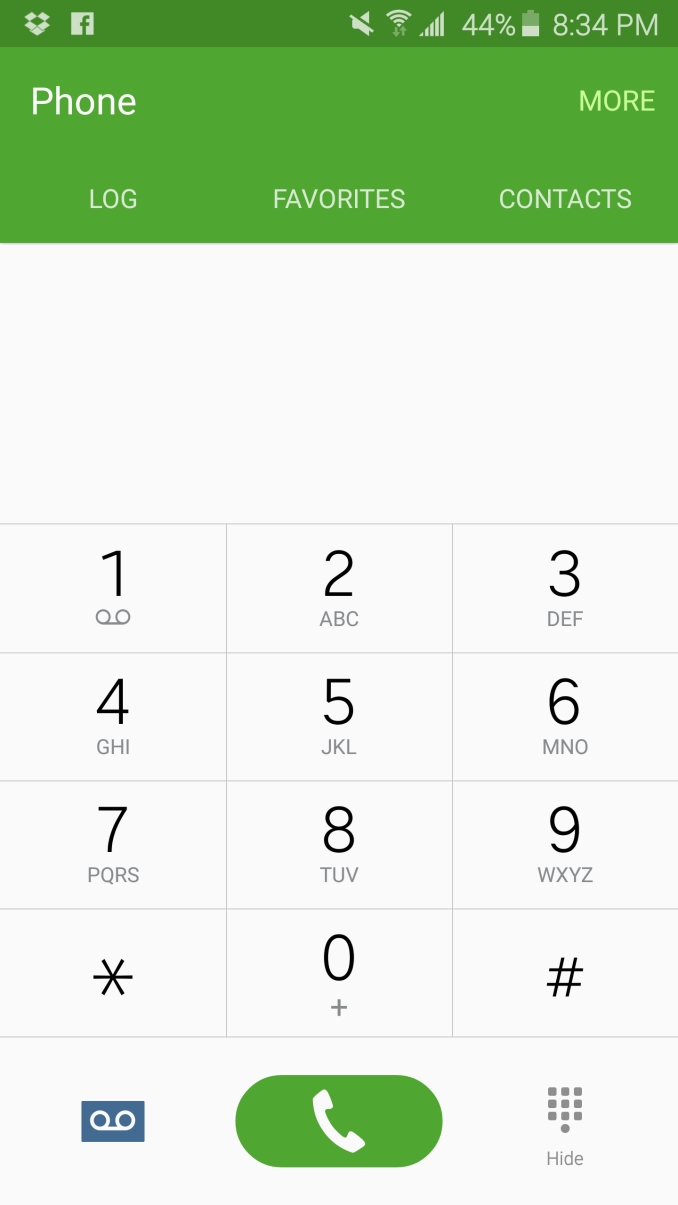


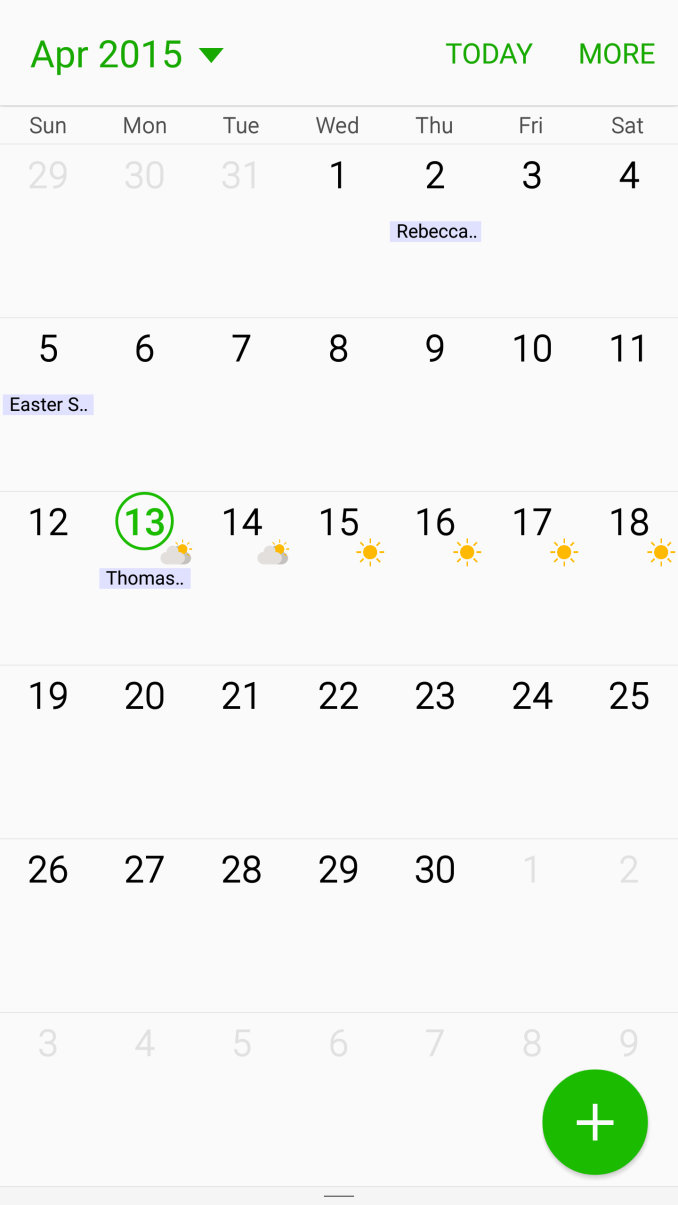
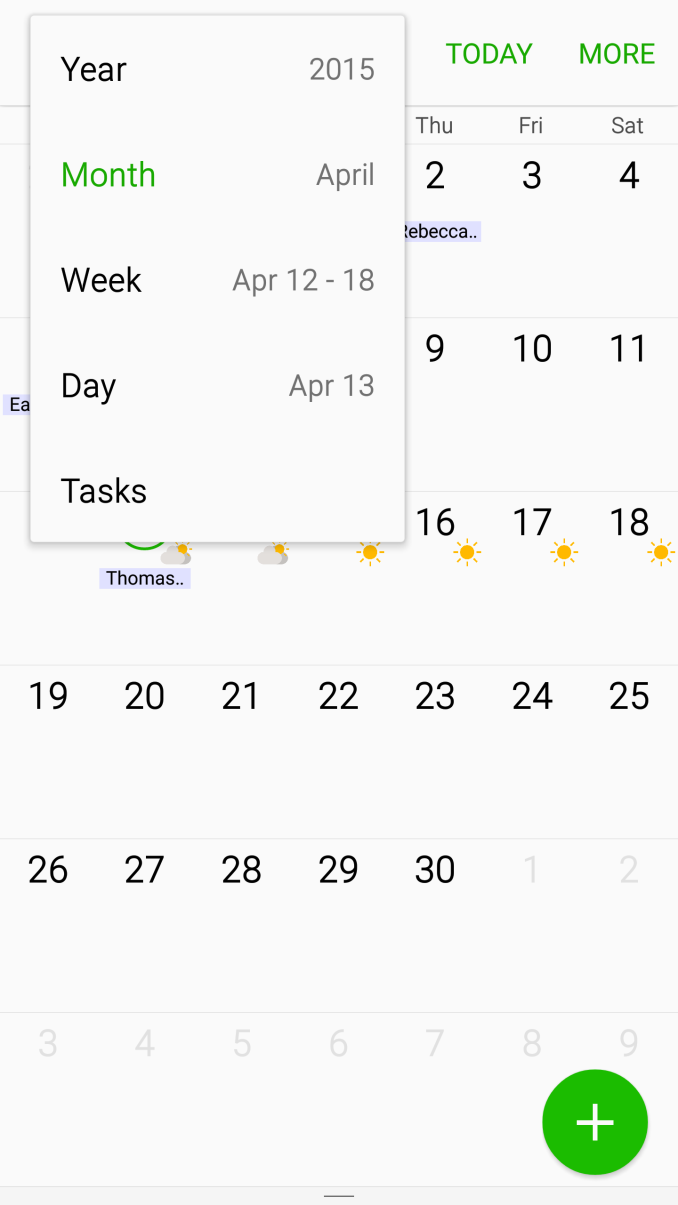



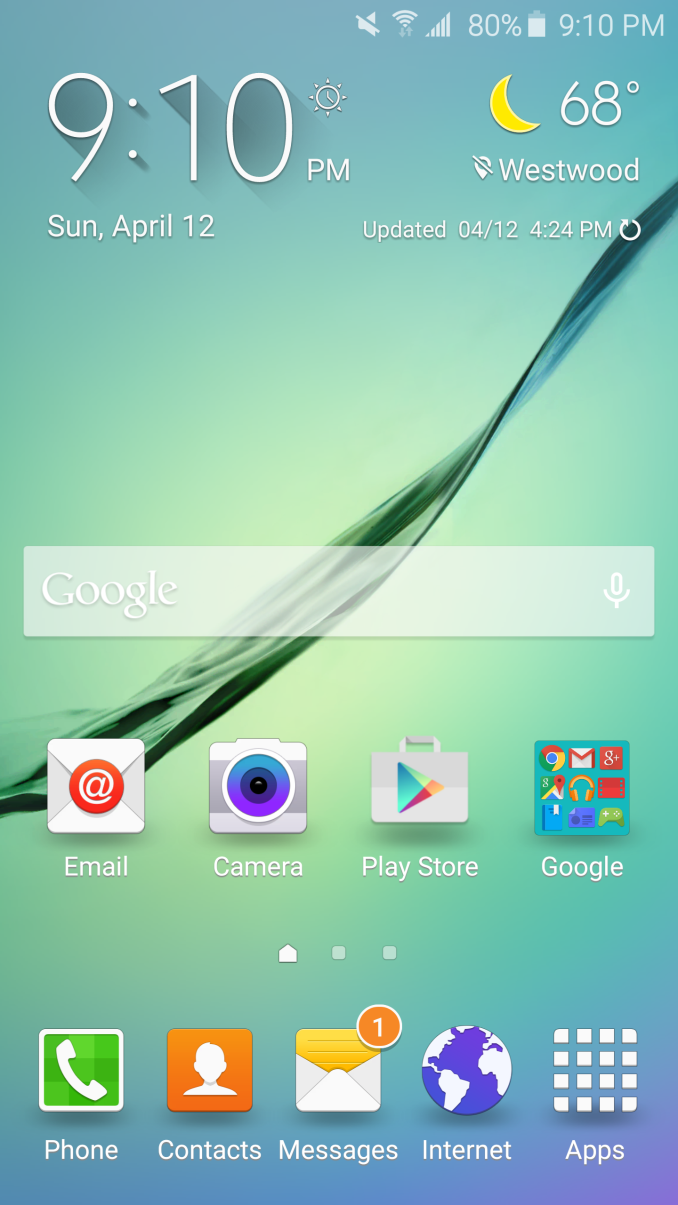
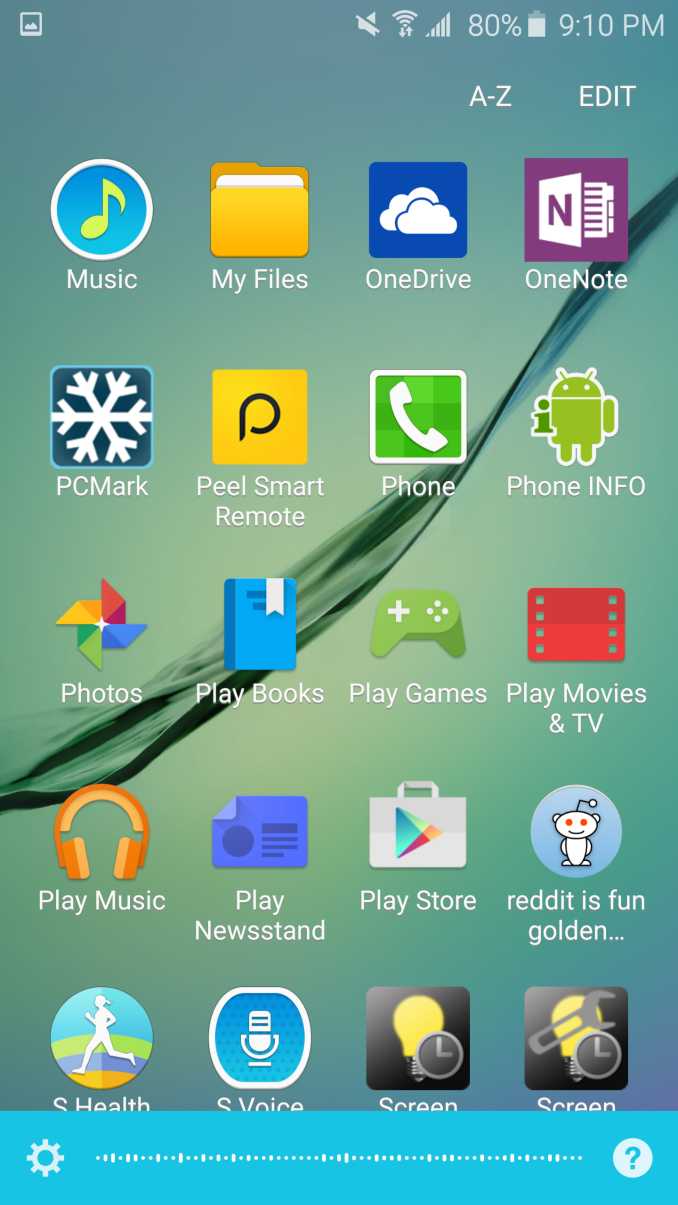












306 Comments
View All Comments
darkich - Saturday, April 18, 2015 - link
That SoC. And that storage. And that screen. And that camera. And that design and build quality...i just held this thing for the first time yesterday and was frankly smitten despite of my initial skepticism.Anyway the benchmark performance is EPIC. iPhone got thoroughly beaten throughout, (except, of course, in the on screen graphics test)
I mean this phone scores higher in Geekbench than the freaking MacBook!!!
darkich - Saturday, April 18, 2015 - link
Oh and using synthetic tests for the battery is an absolute horse sh!t of unbelievable proportions!Why just not go common sense and no horsesh!t, like the actual tests of endurance for calling, music, video playback, gaming and browsing??
According to GSMArena, the S6 scores over 11 hours of browsing and video playback, which is a GREAT result and perfectly on line with Samsung’s official slides.
akdj - Sunday, May 31, 2015 - link
So comment A= 'Epic benchmarks!'And comment B= 'Why are you using synthetic benchmarks?' (In essentially the ONLY B/M that's throttled by the competition?)
Cryio - Saturday, April 18, 2015 - link
For future smartphone reviews, please use the current photography champion, the Lumia 930, in photo comparison tests.JoshHo - Saturday, April 18, 2015 - link
I would love to include the Lumia 930 in photo comparisons if I had one.Dj Gains Bond - Saturday, April 18, 2015 - link
I have a few questions to the complainers of no removable battery and lack thereof of storage.How many times have you had to replace the battery in your s5?
How much storage were you actually buying/using?
I went from s5 to s6, Why because I'm a phone addict and I like new things.
The base s5 had 16gb while the s6 base, has 32gb. Technology moves at such a pace, either you like and use what you have or buy the newest thing. I personally don't care if it has a removable battery or storage. Heck, they have various cloud services along side the phones storage plus many other options to store things with and via the phone.
Complaining does what? Perhaps the next variants will have that but wait, at what costs. Supposedly they're making a phone with removable battery and sd card.
Sandan - Saturday, April 18, 2015 - link
Well...This is a phone I will not buy. No sd card or not being able to replace the battery is a deal breaker....Chaser - Saturday, April 18, 2015 - link
iPhones haven't had removable batteries and SD cards since creation and obviously they sell. Samsung rightfully sees that as a nitch market worth sacrificing to market a more appealing phone. Phones have all but replaced jewelry as the new social status device. People want appealing items to pull out of their pockets and display for all on the counter, table or bar. I'm sure another competitor will design a phone that will have those. So when you nerds pull out your phones you can proudly explain your joy about having a replaceable battery and SD card slots to your friends if they can stay awake that long.sevin7 - Saturday, April 18, 2015 - link
Excellent review. I have been a Samsung fan for a while but sadly the lack of removable battery and sd card ruins this phone for me. Once you put the phone in a case it looks very similar to the older plastic versions. I'm extremely irritated that consumers have led Samsung to make a phone that compromises everything for the sake of looks. It looks like the LG G4 is going to be my next phone.jrs77 - Saturday, April 18, 2015 - link
No removable battery and no mSD-slot makes this just as crap as the iPhone.I'll never buy a phone without these two critical points covered.